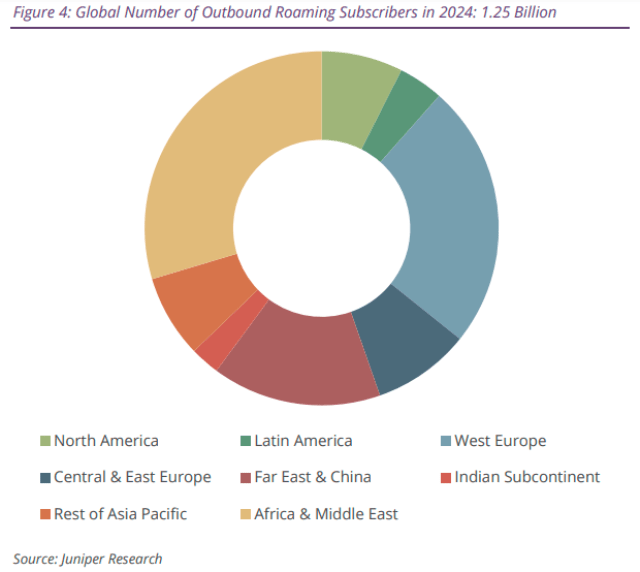The number of active retail roaming subscribers is anticipated to hit 1.25 billion by the end of 2024, with a further surge expected to reach 1.6 billion by 2028, according to Juniper Research.
 One of the primary challenges for operators in capitalizing on roaming activities is the escalating number of subscribers utilizing 5G networks. Although 5G subscribers are projected to constitute only 10 percent of global roamers in 2024, this figure is forecasted to surpass 45 percent by 2028, Juniper Research said in its report on roaming business.
One of the primary challenges for operators in capitalizing on roaming activities is the escalating number of subscribers utilizing 5G networks. Although 5G subscribers are projected to constitute only 10 percent of global roamers in 2024, this figure is forecasted to surpass 45 percent by 2028, Juniper Research said in its report on roaming business.
In response, mobile operators are urged to accelerate their investment in cloud services to facilitate more efficient real-time detection of roaming subscriptions over 5G networks. By doing so, operators can harness the potential to fully monetize the projected $18 billion global subscriber roaming spend by 2028.
The struggle to monetize roaming services persists due to difficulties in identifying roaming connections and activities across different networks. However, by transitioning subscribers to global cloud infrastructure instead of relying solely on bilateral roaming agreements, operators can offer enhanced roaming speeds and lower latency.
 This shift towards cloud roaming services is poised to revolutionize existing roaming practices, enabling subscribers to access data services abroad via cloud applications without the necessity of accessing visited networks and incurring roaming charges, the report on international roaming business said.
This shift towards cloud roaming services is poised to revolutionize existing roaming practices, enabling subscribers to access data services abroad via cloud applications without the necessity of accessing visited networks and incurring roaming charges, the report on international roaming business said.
To optimize the advantages of cloud services for roaming, operators must provide roaming subscribers with an interactive platform to monitor their roaming activities, including location, costs, and data usage.
Regional Outlook and Key Trends
In 2024, West Europe, North America, and Africa & the Middle East are anticipated to lead in outbound roaming revenue, jointly accounting for 71 percent of global outbound roaming revenue, projected at $7.8 billion. This prominence is attributed to the high affluence of these regions, allowing for greater disposable income and consequently larger spends on leisure and business travel.
Moreover, the increased utilization of travel SIMs and eSIMs poses a challenge to operators’ roaming revenue as consumers opt for these alternatives over traditional roaming services. Companies like Orange are adapting to this trend by offering travel SIMs and eSIMs with tailored packages suited for various destinations, ensuring that roaming revenue remains within their ecosystem.
Additionally, the emergence of cloud services has the potential to disrupt operators’ roaming revenue models, particularly benefiting regions with lower outbound roaming subscribers due to their cost-effectiveness compared to traditional roaming agreements. Cloud-based roaming services promise faster and more reliable internet access for roaming customers, both at home and abroad, ultimately reducing costs for both operators and consumers.
Baburajan Kizhakedath
